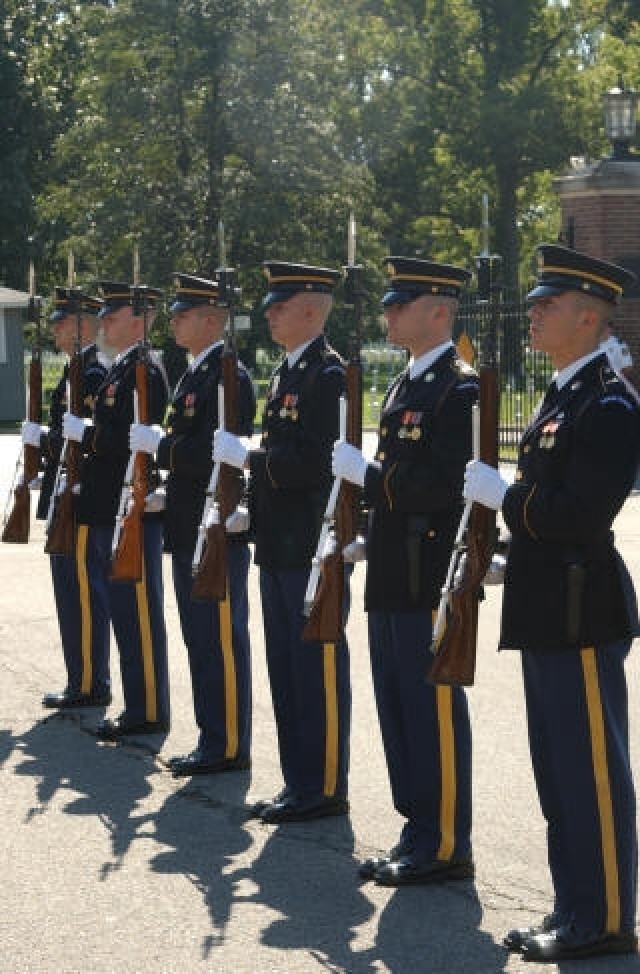ARLINGTON, Va. - The Army came one step closer to bringing home all its missing Soldiers last month and confirmed to the world that the United States never forgets its missing and fallen service members.
Enter Pvt. Francis Lupo, a Soldier in Company E, 18th Infantry Regiment, 1st Infantry Division, fighting in World War I.
Official records reported Lupo missing in action July 21, 1918, during the first French-American multi-divisional attack near Soissons, France. That operation would later come to be known as the Second Battle of the Marne.
No trace of Lupo could be found - until three years ago.
Fast forward 85 years to 2003. While working on a conservation project, a French archaeologist found human remains near the town of Ploisy south of Soissons. The archaeologist turned the remains over to the U.S. Army Memorial Affairs Activity - Europe, which transferred them to a research team from the Joint Prisoner-of-War/Missing-in-Action Accounting Command.
After two years of investigation, JPAC researchers at the Central Identification Laboratory at Hickam Air Force Base, Hawaii, concluded they were examining Lupo's remains.
That conclusion marked the first identification of a U.S. servicemember missing-in-action in World War I, according to the Pentagon's Prisoner-of-War/Missing Personnel Office, and it stands as a new chapter in "Big Red One" history.
"It's kind of a great news story that we had the opportunity to recover one of our own," said Division Command Sgt. Maj. John D. Fourhman. "You can respectfully celebrate the recovery of his body and celebrate the contributions that he made to the division during his time, because he died in battle just over a year after the division was formed. So, it's very meaningful to the history of the division," he explained.
Lupo was laid to rest Sept. 26 at Arlington National Cemetery near Washington, D.C., after a service at the Fort Myer Post Chapel. Niece Rachel Kleislinger, now 73, attended the burial and chapel services despite having never met her uncle Francis, who died more than 15 years before she was born.
"My uncle died for his country doing what he felt was the right thing," said Kleislinger, whose family had talked little of Francis because the subject was too painful for her grandmother.
"I am proud of my uncle and honored to be here representing my family," she added.
Robert Callahan, vice president for the 18th Infantry Regiment Association and a member of the 18th's 2nd Battalion from 1966 to 1967, found out the news from the association's historian via email.
"I was surprised because the email stated that he was a World War I veteran, and I thought it was an error," said Callahan, who attended the funeral. "I emailed him back, told him I got the information and that he gave me the wrong era, the wrong war."
Callahan said he was quite surprised when he discovered the message was actually correct, and he was gratified that someone had found a Soldier's remains.
"I think it gives [servicemembers] a sense of security knowing that if they do fall in battle, that they won't be left or forgotten about , that the military will take care of them," he added. "That's always good to know."
"Every Soldier's important and every Soldier needs to know that they have the Army and the nation behind them," said Fourhman, who also attended the funeral. "This is a story that could only be told in the United States. To my knowledge and to my beliefs, the United States is the only one that aggressively pursues recovering Soldiers lost in combat - especially 88 years later."
One Soldier now serving in the 18th Infantry Regiment who attended the funeral agrees.
"I think this hammers the point home that our Warrior Ethos are always carried out and no Soldier is left behind," said Sgt. Max Webster, a Bradley mechanic with Company D, 1st Battalion, 18th Infantry Regiment, in Schweinfurt, Germany.
"From what I've seen here and the information we've been given, I feel that every means possible has been taken to find any Soldier that we've lost over the course of time," he said.
Lupo's name appears on the Tablets of the Missing at the Aisne-Marne American Cemetery in Belleau, France. He was awarded the Purple Heart and the WWI Victory Medal with three Battle Clasps.




Social Sharing